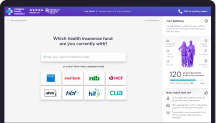As young people go to the hospitals or visit the General Practitioners (GPs) less often than older people, it might not seem sensible for them to pay the premiums and instead some are tempted to flock to the public health system, Medicare.
Until the age of 18, you are likely under your parents’ plan (even though you can apply for your own Medicare card when you turn fifteen). But as you prepare to join the workforce for the first time, you should start thinking about your health insurance coverage and how you can minimize your medical expenses in the long run.
While nobody can blame them considering opting out, this trend is worrisome for the insurance marketplace and, more importantly, for the overall economy. Australian insurance is based on a risk-equalization system where the young support the claims of the old; like the great circle of life, this system keeps the healthcare ecosystem moving [2].
It can be an annoying topic to think about but it’s critical that you make smart choices early on to make the most of the health insurance options and benefits available to you.
So we decided to put together this guide, a one-page cheat sheet if you will, for those under 35.
Let’s Do Some Pros and Cons Thinking
It never hurts to look at both sides of an argument when making any decision. Let’s browse through the pros and cons of sticking with Medicare over private health insurance options.
Pros:
- It’s free! (well, technically we all pay for Medicare with our 2% Medicare Levy tax)
- Theoretically free access to all public health services as a public patient
- 75% of Medicare Benefits Schedule (MBS) for private hospital services (Medicare’s schedule fees – how much they believe each operation, consultation, and tests should cost, which might be lower than the fees actually charged by the private facilities )
Cons:
- Medicare does not cover ambulance covers (see our articles about ambulance covers for NSW residents and VIC residents)
- Limited extras cover such as dental appointments and restrictions on preventive services
- A significant wait for many procedures (on average, over half of Australians indicated they had to wait over a month for public hospital procedure upon making an appointment with 10% having waited over 6 months)
- With more young people joining Medicare, it might cause considerable pressure on Medicare’s healthcare costs and thus their ability to serve the public
- You cannot choose your own doctors and will often need to pay upfront for your portion of the medical bill
Even if it’s free and easier now, you want to consider the consequences you might have to trade in for before going over some late changes that might be added into your equation.
Possible Costs Down the Road If You Opt-out of Private Health Insurance
If you opt for a private hospital cover after you are 31, you might be stuck with much higher monthly premiums for a long time. Lifetime Health Cover loading of 2% (of the annual health insurance premium) is added for every year you’ve been uninsured since you turned 30, if you don’t have private hospital insurance coverage after 1st of July following your 31st birthday.
Let’s say you get a private health insurance policy at the age of 35. You will be required to pay 110% of your policy’s premium every year. Maximum ceiling on the LHC loading is 70% [3].
This punishment ends once you’ve had 10 years of continuous cover.
While you could argue that you might actually spend less on healthcare costs in total even if you end up paying the LHC loading later in life if you save the money you would’ve paid for your private health plan during your 20s, we all know how difficult it is to save the money we don’t use in our 20s with limited income. So paying 10-20% more when you have a family and other serious financial commitments in your 30s and 40s might prove extremely challenging.
There’s also the Medicare Levy Surcharge (typically 1-1.5% tax) if you make more than $140,001 for singles or $280,001 for families.
In case you did not know, you are also entitled to government rebates if you make under $140,001 ($280,001 for families) on your premiums. For those under the age of 65, you could be entitled to up to 25.415% rebate rate, which you could claim as a premium reduction upfront.
Mix-and-Match Extras Covers for Healthy People (or Aspiring Healthy People)
You can often mix and match hospitals and extras covers. There are a lot of flexible extras/general treatment insurance options that are focused on improving both your physical and mental health.
Many private extra covers include unique options in their packages based on your need – better dental coverage (those wisdom teeth!), additional benefits if you’re planning to have a baby, diet and nutrition, acupuncture, therapy, and sometimes even hypnotherapy. Some also offer gym and fitness benefits.
Be sure to get coverage on ambulance calls and emergency room visits as well – as Medicare doesn’t cover the cost and except for in Queensland and Tasmania, the ambulance costs can be pretty hefty.
Changes on the Horizon to Improve Affordability and Value
The Australian government has gotten growingly concerned about this trend of losing youth population in the private insurance pool and will be rolling out a new initiative to provide valuable and affordable health insurance for the young citizens.
Starting 1 April 2019, Australians aged 18-29 years can expect insurers to offer you two per cent for each year they are under 30, to be capped at 10 per cent for 18 to 25-year-olds. See the full outline of the reform here.
Certain insurance companies are looking into delivering customized packages to meet the unique needs of the younger generation with a flexible subscription model. A new insurance marketplace might be coming for you.
You might be excited to hear that the innovative start-ups are also getting involved in creative solutions and products in healthcare as well. There are hackathons, summits and ‘catalyst’ programs each year in Australia (and in many other developed countries) for entrepreneurs wanting to tackle the challenges of improving the human health experience.
One such start-up allows health insurers and employers to offer a wide range of personalised health programs to insurance holders. The healthier their customers become, the fewer claims will be filed, and the less premiums will rise.
If you want some expert advice on how to choose what you want to include in your insurance plan, chat with our agent and get guidance on finding and evaluating the options available to you!
Think about your goals and milestones for the next 5-10 years and make sure you are well-covered for both foreseeable and unexpected issues. Nothing is more stressful than having to get urgent medical procedures when you know you are completely exposed. Investing a little bit of time now to consider your options carefully could not only save you thousands of dollars down the road but also enable you to access great lifestyle benefits immediately.





